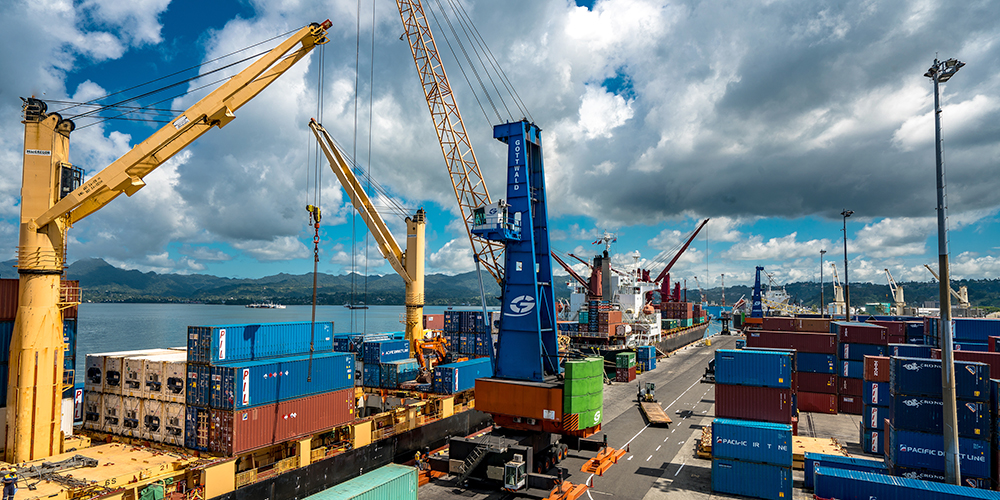Introduction
Ride-sharing and other services based on the sharing economy emerged to meet changing transport demands and preferences. Yet, their entry into the market has not been easy. In the case of the Republic of Korea, opposition from taxi operators and the lack of legal basis barred the entry of ride-sharing service Uber Pool.
However, some believe that shared transport services, which were made possible by advances in technology, may be necessary to promote competition and improve services by offering good value for money and convenience.
A report from the Korea Transport Institute (KOTI) looks at the social, economic, and environmental impacts of new transport services in the Fourth Industrial Revolution and recommends legal and institutional measures to promote shared prosperity between old and new operators in the Republic of Korea.
New Transport Services and Their Socioeconomic Implications
The introduction of new services is inevitable given the changes in the transport market (e.g., demographics, traffic volume, number of vehicles).
Passenger transport service
The introduction of autonomous driving transport services may result in reduced parking demand, labor costs for commercial vehicles, traffic accidents, and the number of vehicles on the road. However, safety concerns following recent accidents involving autonomous vehicles need to be addressed. Other issues could also affect the entry of autonomous transport, such as public acceptance, security issues, and lack of policies and infrastructure.
There is growing interest in hiring vehicles on-demand in the Republic of Korea. Ride-sharing services, which expand the carpooling concept, have also become popular as consumers and suppliers can be matched up in real-time through a smartphone app.
In 2019, the country’s ride-hailing market amounted to $528 million and is expected to show an annual growth rate of 7.1%, resulting in a market volume of $694 million by 2023. Tech firm Kakao Corp. operates a ride-hailing app called Kakao Taxi, which connects users to licensed taxis. Ride-hailing network companies are allowed to operate if they satisfy certain conditions, such as having a larger number of licensed taxi drivers.
Another type of transport service is Mobility-as-a-Service or MaaS. It aims to improve the passenger experience through the integration of and access to different transport services in one single digital mobility platform. It has yet to be adopted in the Republic of Korea. Trial projects are being implemented, such as offering discounts on transfers between mass transport systems and taxis.
In the road sector, sharing services based on autonomous vehicles may reduce the size of the existing transport service in the passenger sector as travel efficiency[1] improves. However, the overall size of the transport service market may increase or decrease, as the appearance of new transport service can create a new market. Transport service providers or vehicle manufacturers should adjust their profit structure according to changes in market size.
Autonomous driving services based on the ride-sharing concept may affect the hiring of drivers, improve mobility of vulnerable users, and eliminate underdeveloped transportation service areas. Some drivers may lose their jobs due to the introduction of autonomous vehicles. With the increased automation and sharing in transport services, professional driver jobs will be reduced by about 30% in the road sector in 2040. The introduction of the online-to-offline (O2O) service, which allows users to book a taxi or rental car through a smartphone, will create additional employment, but the effect is not likely to be large enough to offset job cuts. These services, meanwhile, will improve the mobility of the elderly and the disabled as well as improve the movement of inhabitants in underdeveloped transportation service areas.
Freight transport service
The logistics sector already uses autonomous driving technology, such as automated forklift, automated transport equipment, self-driving trailers, and cargo handling and unloading robots. It has since expanded technology applications to self-driving trucks and delivery robots for long-distance bulk handling and last-mile delivery in cities and regions in the mid-to long term.
Services that use logistics equipment in common seems to be increasing as the concept of infrastructure and even labor sharing has expanded in the sector.[2] Freight transportation equipment are expected to be leased or rented at the business-to-consumer level. The initial phase of the shared cargo transport service has already started in the country.
Air transport service
Air mobility services, which will offer short-distance transportation within urban areas, can significantly affect the passenger transport sector, but these have not yet been commercialized as of 2018. Air transportation for the downtown area is still in the development phase. Four companies signed an agreement in September 2020 to speed up the development of Urban Air Mobility in the Republic of Korea.
Air mobility service that uses highly automated aircraft is economically more advantageous in the islands or remote areas where it would more cost-efficient to build an airport than to build road networks and bridges. It can also be used in emergency transportation where time is of the essence.
Personal air vehicles and on-demand air mobility will also be part of the country’s skyline. The personal air vehicle combines advanced navigation and autonomous flight technology and is designed to overcome traffic congestion on the ground and to improve mobility and speed. It could be a drone or a pilotless aircraft.
On-demand air mobility is a transport service that may use a personal airplane or flying car. It will create a new market as well as share the existing ground-based market. It will also create a demand for personnel, such as pilots, mechanics, and ground-handling personnel. The implementation of remote control, autonomous flight, and maintenance automation technology is expected over the long term, but operations personnel will still be needed. On-demand air mobility is estimated to create 1,200 jobs by 2045. Commercial aircraft pilots will flow into the new air transport industry sector, assuming that the qualification criteria will be based on the existing criteria.
Strategies to Introduce New Transport Services
Market acceptance of new transportation services may take time. Only a few were riding trains when these were introduced despite their comparative advantage over horse-drawn carriages. Excessive regulations can also limit passenger experience, similar to what happened to steam cars in the United Kingdom. The UK car industry was left behind in the late 1800s due to stringent laws on steam cars that included reduced speeds on public roads and rural areas.
Some groups that will be displaced by new transportation services should be supported in terms of social integration. For example, the introduction of automated cranes resulted in modernized and efficient port operations but port workers lost their jobs and needed assistance.
In the area of passenger transport services, O2O services can target niche markets to minimize conflict with existing service providers. These include providing services when and where there is insufficient public transportation supply, such as during late-night hours or at underdeveloped transportation service areas. Niche markets should be targeted first by the new service provider in the freight forwarding business as well.
Various new O2O service businesses in the road freight sector continue to develop and expand the consumer market, but existing operators are still running under a deficit. A co-prosperity fund that can mutually compensate for the loss between the old and new freight transport industry can be considered to ensure continuous co-prosperity growth with existing market players. In Australia and the United States, they charge an additional fee for the O2O service and use it as a fund to support the existing transportation industry.
Facilities that link various transportation modes need to be constructed for passengers to access new services quickly and easily.
Institutional Measures
To ease the entry of new passenger transport services, the government can implement the following:
Consumer protection. Set a limit to passenger transport services’ maximum market share and fare increases. Or provide maximum fares to prevent price-fixing.
Safety. Establish a legal system that: 1) imposes vehicle safety management and safe driving responsibilities to platform service providers, alongside the transport service providers; 2) covers expanded autonomous transport services, such as stipulating legal responsibilities for accidents and preparing infrastructure and safety standards; and 3) ensures the safety of the fuselage and operation of the aviation sector as well as recognizes various business models for air transportation.
Fair competition. Allow the O2O industry to enter the passenger service market after strengthening the competitiveness of the existing industry. Prepare measures to address the contraction of the truck transport market after the commercialization of self-driving car trucks and support the development of self-driving trucks.
Infrastructure development. Prepare for the introduction of air mobility in the downtown area by improving the infrastructure and system. The logistics industry can also establish a system for the operation of self-driving trucks and lead major discussions and agreements on various socioeconomic issues related to the employment of existing truck drivers.
Sangjin Han






